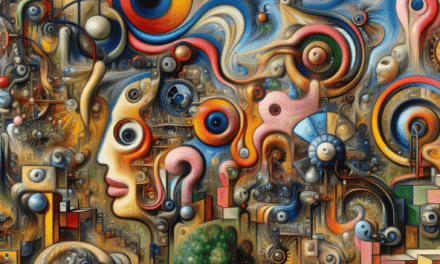Exploring the Potential of At-Home Brain Stimulation for Depression Treatment

Depression is a pervasive mental health disorder affecting millions worldwide. Traditional treatments, such as medication and therapy, have proven effective for many, but not all patients respond to these methods. In recent years, at-home brain stimulation has emerged as a promising alternative or complementary treatment for depression. This article delves into the potential of at-home brain stimulation, examining its mechanisms, effectiveness, safety, accessibility, and future prospects.
Understanding At-Home Brain Stimulation
At-home brain stimulation refers to the use of devices that deliver electrical or magnetic impulses to the brain, aiming to modulate neural activity and alleviate symptoms of depression. These devices are designed for personal use, allowing individuals to administer treatment in the comfort of their own homes. The two most common types of at-home brain stimulation are transcranial direct current stimulation (tDCS) and transcranial magnetic stimulation (TMS).
tDCS involves applying a low electrical current to the scalp through electrodes, which can alter neuronal excitability. TMS, on the other hand, uses magnetic fields to induce electrical currents in specific brain regions. Both methods aim to target areas of the brain associated with mood regulation, such as the prefrontal cortex.
Research has shown that these techniques can influence brain plasticity, potentially leading to long-term changes in neural circuits. This ability to modulate brain activity makes at-home brain stimulation a compelling option for treating depression, especially for those who have not found relief through conventional methods.
The Science Behind Brain Stimulation
The underlying principle of brain stimulation is neuroplasticity, the brain’s ability to reorganize itself by forming new neural connections. Depression is often associated with disrupted neural pathways, particularly in regions involved in mood regulation. By stimulating these areas, brain stimulation aims to restore normal function and alleviate depressive symptoms.
Studies have demonstrated that tDCS can enhance synaptic plasticity, facilitating the strengthening or weakening of synapses. This process is crucial for learning and memory, and its enhancement may help counteract the cognitive deficits often seen in depression. Similarly, TMS has been shown to increase the release of neurotransmitters like dopamine and serotonin, which play key roles in mood regulation.
Moreover, brain stimulation can influence the activity of the default mode network (DMN), a network of brain regions that is typically overactive in depression. By modulating the DMN, brain stimulation may help reduce rumination and negative thought patterns, common symptoms of depression.
Effectiveness of At-Home Brain Stimulation
The effectiveness of at-home brain stimulation for depression treatment has been the subject of numerous studies. While results vary, many have reported positive outcomes, particularly when used in conjunction with other treatments.
A meta-analysis of tDCS studies found that it significantly reduced depressive symptoms compared to sham stimulation. The effects were most pronounced in patients with treatment-resistant depression, suggesting that tDCS may be a valuable option for those who have not responded to traditional therapies.
Similarly, research on at-home TMS has shown promising results. A study involving patients with major depressive disorder found that TMS led to significant improvements in mood and cognitive function. These findings are supported by case studies, such as that of a patient who experienced a marked reduction in depressive symptoms after several weeks of at-home TMS sessions.
However, it is important to note that the effectiveness of brain stimulation can vary depending on factors such as the severity of depression, the specific protocol used, and individual differences in brain anatomy and function. As such, personalized treatment plans are crucial for optimizing outcomes.
Safety and Side Effects
Safety is a primary concern when considering any medical treatment, and at-home brain stimulation is no exception. Fortunately, both tDCS and TMS have been shown to be relatively safe, with few serious side effects reported.
Common side effects of tDCS include mild skin irritation at the electrode site, headaches, and dizziness. These effects are generally transient and resolve shortly after treatment. TMS may cause discomfort at the site of stimulation, as well as headaches and muscle twitches. In rare cases, TMS can induce seizures, but this risk is minimal when proper safety guidelines are followed.
To ensure safety, it is crucial for users to receive proper training on device operation and adhere to recommended protocols. Many at-home devices come with detailed instructions and safety features to minimize risks. Additionally, regular consultations with healthcare professionals can help monitor progress and address any concerns.
Accessibility and Cost
One of the major advantages of at-home brain stimulation is its accessibility. Traditional brain stimulation treatments, such as in-clinic TMS, can be costly and time-consuming, requiring frequent visits to a healthcare facility. In contrast, at-home devices offer a more convenient and affordable option.
The cost of at-home brain stimulation devices varies, but they are generally more affordable than in-clinic treatments. Some insurance plans may cover the cost of these devices, further reducing financial barriers. Additionally, the ability to administer treatment at home eliminates the need for travel and time off work, making it a more feasible option for many individuals.
However, accessibility is not solely determined by cost. Factors such as availability of devices, internet access for online consultations, and user education also play a role. Efforts to increase awareness and provide resources for training and support are essential for maximizing the reach of at-home brain stimulation.
Case Studies and Real-World Applications
To better understand the potential of at-home brain stimulation, it is helpful to examine real-world applications and case studies. These examples provide valuable insights into the practical use of these devices and their impact on individuals with depression.
One notable case study involved a 45-year-old woman with treatment-resistant depression who had not responded to medication or therapy. After six weeks of daily tDCS sessions at home, she reported a significant reduction in depressive symptoms and an improvement in overall quality of life. Her case highlights the potential of at-home brain stimulation as a viable alternative for those who have exhausted other treatment options.
Another example is a 30-year-old man with major depressive disorder who used an at-home TMS device. After several weeks of treatment, he experienced a marked improvement in mood and cognitive function, allowing him to return to work and resume normal activities. This case underscores the potential of at-home TMS to provide relief for individuals with severe depression.
These case studies, along with numerous others, demonstrate the potential of at-home brain stimulation to improve the lives of individuals with depression. However, it is important to recognize that results can vary, and further research is needed to fully understand the factors that contribute to successful outcomes.
Future Prospects and Research Directions
The field of at-home brain stimulation is rapidly evolving, with ongoing research exploring new techniques, protocols, and applications. As our understanding of the brain and its response to stimulation advances, so too does the potential for more effective and personalized treatments.
One promising area of research is the development of closed-loop systems, which use real-time feedback to adjust stimulation parameters based on the individual’s brain activity. This approach has the potential to enhance the precision and effectiveness of treatment, leading to better outcomes for patients.
Additionally, researchers are investigating the use of brain stimulation in combination with other therapies, such as cognitive-behavioral therapy (CBT) or pharmacotherapy. By targeting multiple aspects of depression simultaneously, these combined approaches may offer more comprehensive and lasting relief.
As technology continues to advance, the accessibility and affordability of at-home brain stimulation are likely to improve. Efforts to increase awareness and provide education and support will be crucial for ensuring that these treatments reach those who need them most.
Conclusion
At-home brain stimulation represents a promising frontier in the treatment of depression. With its potential to modulate neural activity and promote neuroplasticity, it offers a novel approach for individuals who have not found relief through traditional methods. While challenges remain, particularly in terms of accessibility and personalization, ongoing research and technological advancements hold the promise of more effective and widely available treatments in the future.
As we continue to explore the potential of at-home brain stimulation, it is essential to prioritize safety, efficacy, and accessibility. By doing so, we can ensure that this innovative treatment option becomes a valuable tool in the fight against depression, improving the lives of countless individuals worldwide.





